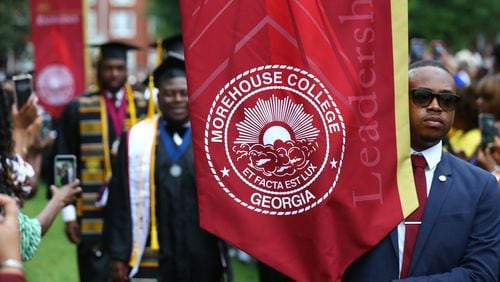Red Light/Green Light imagery has been adopted by proponents and opponents of redeveloping Atlanta’s Gulch. Makes sense, as stop or go is the question now before Atlanta city government as it weighs an ambitious project that would create a shiny new neighborhood where none now exists.
A vote by the Atlanta City Council could come in a few weeks on public incentives that would undergird what could be a $5 billion construction project. Up to roughly $1.9 billion of that cost could be public support, according to details in a 700-page agreement.
That is a sizable private and public investment, and neither bucket should be overlooked, or understated by either foes or fans of the Gulch deal.
The details of public benefit and public subsidy should be thoroughly vetted and duly considered, we wrote on this page in early September. The importance and necessity of such due diligence rises along with a project’s cost, we believe. That’s why we urged then for slowing an aggressive approval timeline to allow elected officials adequate time to assess the project’s merit.
If the Council brings the Gulch measure to a vote on Nov. 5, that would be one day shy of two weeks after the latest revised proposal was announced. And, by then, it will have been two months since an earlier iteration came before the public.
That amount of time seems sufficient for airing reasonable pros and cons before calling a vote.
The details of CIM Group’s package for the 40-acre Gulch site have dominated the public debate. We’d suggest that the big question for the Council really amounts to whether a development that stands to be a transformational remake of a large chunk of Atlanta’s core is worth the cost for the city, state and region.
As planned, CIM’s project would link areas that now have bright spots, but have also struggled to reach their full potential. It is tantalizing to think about a new street grid linking hip Westside apartments and condos with downtown’s center. It’s also correct to be cautious about the cost of doing so, or whether new, privately owned streets would be sufficiently open to public uses and whether building over the Gulch would foreclose future passenger rail options. Those are questions Council should carefully consider in coming days.
Given that the network of railroad lines and parking lots that now fill the Gulch have not been developed in the century since Atlanta raised its streets safely above the tracks, the market has, up to now, silently spoken on the unaided merits of the site, we’d suggest.
And that’s when public incentives have often been brought into play – to make desired development happen where it otherwise likely would not.
It’s pretty settled public policy now that taxpayer money is routinely used to spur development in specific places. Governments are unlikely to move away from using such tools, despite some liberals and conservatives alike arguing that it amounts to improperly helping pick winners and losers.
Public-private projects abound, from Cobb County’s luring of the Atlanta Braves to taxpayer money already used around the Gulch to renovate State Farm Arena and help pay for Mercedes-Benz Stadium.
And there is no other known plan to fill in the hole that is the Gulch.
In an ideal world, the City might have the pleasant – and potentially profitable – challenge of deciding among competing developers and driving an ideal deal for taxpayers in the process. That’s not the case here. If this deal doesn’t happen, and CIM Group walks away, the Gulch likely continues on as Atlanta’s open-air sub-basement.
Which scenario is preferable may sum up the choice before the City Council.
About the Author






